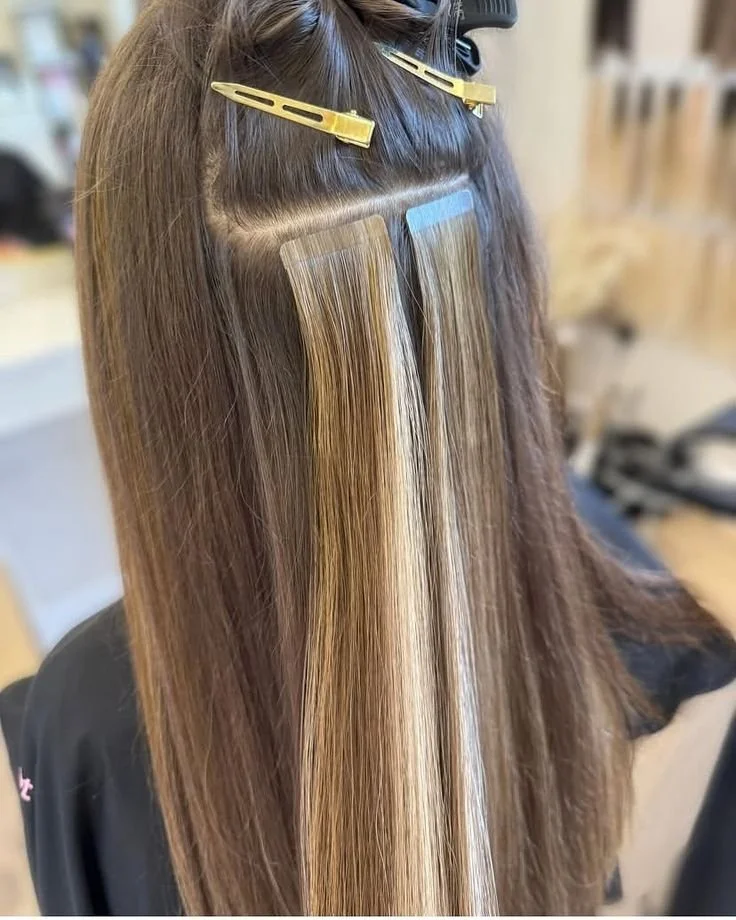Maintenance 101: How Often to Move-Up or Replace Extensions
How Often to Move-Up or Replace Extensions is a question many hair enthusiasts ask when trying to maintain their luscious locks. Understanding the timeline for moving up or replacing extensions ensures your hair looks natural, healthy, and seamless, while also protecting your natural strands from damage. Proper maintenance is key to enjoying long-lasting results and avoiding unnecessary stress on your hair.
Understanding Hair Growth and Extensions
Hair grows at an average rate of about half an inch per month. When you have extensions installed, your natural hair continues to grow, creating a gap between the extension and your scalp. This is why regular maintenance is necessary. The rate at which you need to move up or replace extensions depends on your hair type, growth rate, and the type of extension you have. Some extensions, like tape-ins, may require more frequent adjustments than sew-in or keratin-based extensions.
Types of Hair Extensions and Maintenance Needs
Tape-In Extensions
Tape-in extensions are a popular choice due to their easy application and natural look. They typically last 6–8 weeks before a move-up is necessary. During the move-up, the stylist removes the extension, repositions it closer to the scalp, and reapplies it with fresh tape. This prevents the tape from slipping and ensures that your hair looks seamless. Replacing tape-ins entirely is usually needed every 3–4 months if you want to maintain optimal hair health and extension quality.
Sew-In (Weave) Extensions
Sew-in extensions are braided into the natural hair and can last 6–8 weeks before adjustments are required. The move-up process involves loosening the braid and rebraiding the hair closer to the scalp to accommodate new growth. Sew-ins can sometimes last longer than tape-ins if maintained carefully, but it’s important to avoid leaving them in too long to prevent tangling, matting, or breakage.
Keratin or Fusion Extensions
Keratin extensions, also called fusion extensions, are attached with a keratin-based adhesive. These can last 3–4 months before replacement is necessary. A move-up may be possible depending on the extension’s condition, but usually, keratin bonds are removed entirely and replaced to ensure the hair remains strong and smooth. Proper care with heat styling tools and sulfate-free shampoos will extend their life.
Clip-In Extensions
Clip-ins are temporary and do not require professional move-ups. They can last several years if handled with care and washed infrequently. While they don’t need replacement in a set timeline, regular inspection for wear and tear is recommended to ensure they remain in good condition.
Signs You Need a Move-Up
Knowing when to move up your extensions is crucial for maintaining both your natural hair and the extensions. Common signs include:
Visible gaps between your scalp and the extension bonds – This usually occurs when hair grows more than an inch or two.
Tugging or pulling sensation – Extensions that are too far from the scalp can create tension on your natural hair.
Slipping or loosening of bonds – Especially common with tape-in or keratin extensions.
Tangling or matting near the roots – Hair that grows out without adjustment can easily knot and cause damage.
If any of these signs appear, it’s time to book a move-up appointment.
Replacing Extensions Entirely
While move-ups reposition existing extensions, replacement involves removing old extensions and installing new ones. Full replacement may be necessary if:
Extensions have become damaged, frizzy, or tangled beyond repair.
Hair color has changed and no longer matches the extensions.
The adhesive or bonding method has lost effectiveness.
You want a different length or volume.
For most extension types, a full replacement is recommended every 3–6 months, depending on hair health and how well the extensions have been maintained.
Daily Care Tips to Extend Extension Life
Gentle Washing
Use sulfate-free shampoos and conditioners. Avoid rubbing hair vigorously; instead, gently cleanse and detangle with a wide-tooth comb or fingers. This reduces stress on both natural hair and extensions.
Avoid Excess Heat
Minimize use of flat irons, curling wands, or blow dryers. Excess heat can weaken bonds and damage hair strands, leading to more frequent replacement.
Nighttime Care
Tie your hair in a loose braid or ponytail before bed and sleep on a satin or silk pillowcase. This prevents friction, reduces tangling, and extends the life of your extensions.
Regular Salon Check-Ups
Even if your hair looks fine at home, regular professional inspections are vital. Stylists can spot early signs of damage, provide move-ups, and offer tailored advice for your hair type.
Factors Affecting Extension Longevity
Several factors determine how often you need a move-up or replacement:
Hair type and texture – Fine or thin hair may require more frequent adjustments.
Lifestyle – Active lifestyles, frequent swimming, or heat styling can shorten extension lifespan.
Extension quality – High-quality human hair extensions last longer than synthetic options.
Maintenance routine – Neglecting care can lead to matting, breakage, or bond failure.
Conclusion
Understanding how often to move-up or replace extensions is crucial for maintaining healthy, beautiful hair. By recognizing the signs that indicate your extensions need attention, following proper care routines, and scheduling regular salon visits, you can enjoy seamless, long-lasting results. Remember, each type of extension has its own timeline, and listening to your stylist’s advice ensures both your natural hair and extensions remain in top condition. Investing in maintenance not only protects your hair but also ensures you continue to flaunt flawless, luscious locks for months on end




